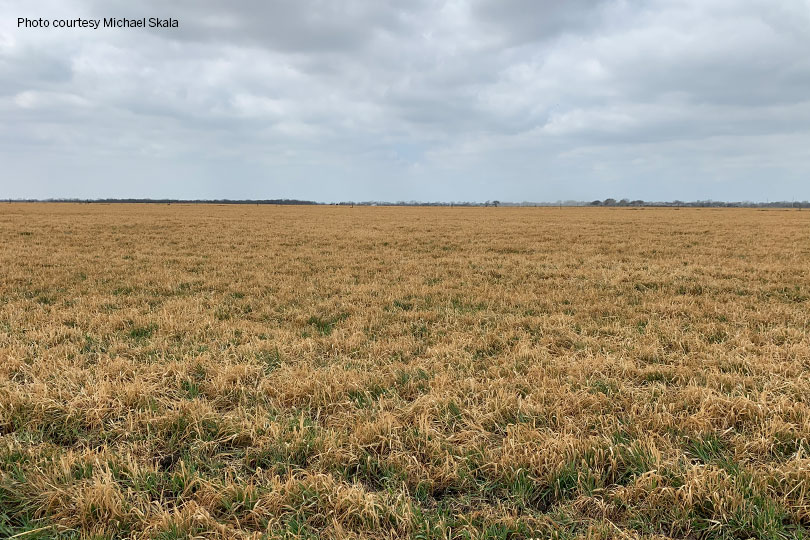By Jennifer Whitlock
Field Editor
The recent winter weather’s impacts aren’t over yet. Farmers and ranchers across the state are still tallying their losses, including Central Texas farmers who had oats or wheat in the field.
Few Central Texas farmers had planted corn prior to the storm, Pioneer Field Agronomist Adam Owens said.
“We had over 130 consecutive hours of below-freezing atmospheric conditions, so that doesn’t help at all,” Owens said in an interview with Texas Farm Bureau Radio Network. “But in most of my area, farmers had not begun planting corn yet. They were contemplating doing so the week of Feb. 10, but the forecast just kept getting worse day by day, so almost everyone held off.”
Owens covers the majority of Central Texas from south of the Dallas-Fort Worth area to Abilene. He said only time will tell how significant the cold weather’s
impact will be on the region’s oat and what crops.
Earlier-planted fields and fields with lighter, sandier soil textures seem to have suffered the worst damage, Owens noted.
“What we are seeing in the wheat is that most of the crop was still at the tillering stage, which is good. Because at that stage, wheat is the most freeze injury-resistant as it will be during its entire growth and development. Had we been in the jointing growth stage, which is Feekes 5 and 6, we would have seen much more damage,” he said. “That’s because when the jointing head formation is occurring, the growing point moves from below ground to an above-ground area. Severe stresses, like what we saw during this winter storm, could have killed the growing point and caused bending of the lower stem, causing the plant to lay over. The impact on yield at that stage would have been moderate to severe, where right now in that tillering stage, it’s milder.”
Most wheat is exhibiting signs of frost burn, where the top few inches of the plants are yellowed and necrotic, but the lower few inches are still a healthy green and will grow out of it.
The region’s oat crops did not fare as well. Some farmers like Falls County Farm Bureau member Michael Skala hope the oats will hold up long enough for grazing until summer grasses can grow in enough to provide forage for grazing cattle.
“Our grazing oats got hit a little harder. Typically, oats don’t tolerate the cold quite as well as wheat does, so they’ve got quite a bit more leaf burn to them,” Skala said. “We’re hoping they grow back out of it, and we’ll still get some grazing out of them, but we’re not sure yet.”
Normally, Skala relies on oats as forage for his cattle through April, giving ryegrass and bermudagrass a chance to grow before turning cattle into those pastures. Now, Skala hopes to have enough forage left in the oat fields to last through March.
“If the oats die off completely, we’ll have to start haying heavily, because right now, our calves are relying on the oats. So, we’d have to start feeding if the oats don’t make it, and that gets expensive in a hurry,” he said.
The freezing temperatures did help kill off winter annual weeds like mustards and prickly lettuce, Owens said.
Soil temperatures also have warmed up enough for farmers to begin planting corn, according to Owens.
“It takes a long time for soil to get from 30 degrees to 50 degrees, which is the minimum soil temperature we need to plant corn, but we have a favorable five-day forecast, so people should be busy planting now,” he said. “Soil temperatures really rebounded very nicely.”
For more information on disaster assistance and other programs related to Winter Storm Uri, visit texasfarmbureau.org/winter-storm-resources.

